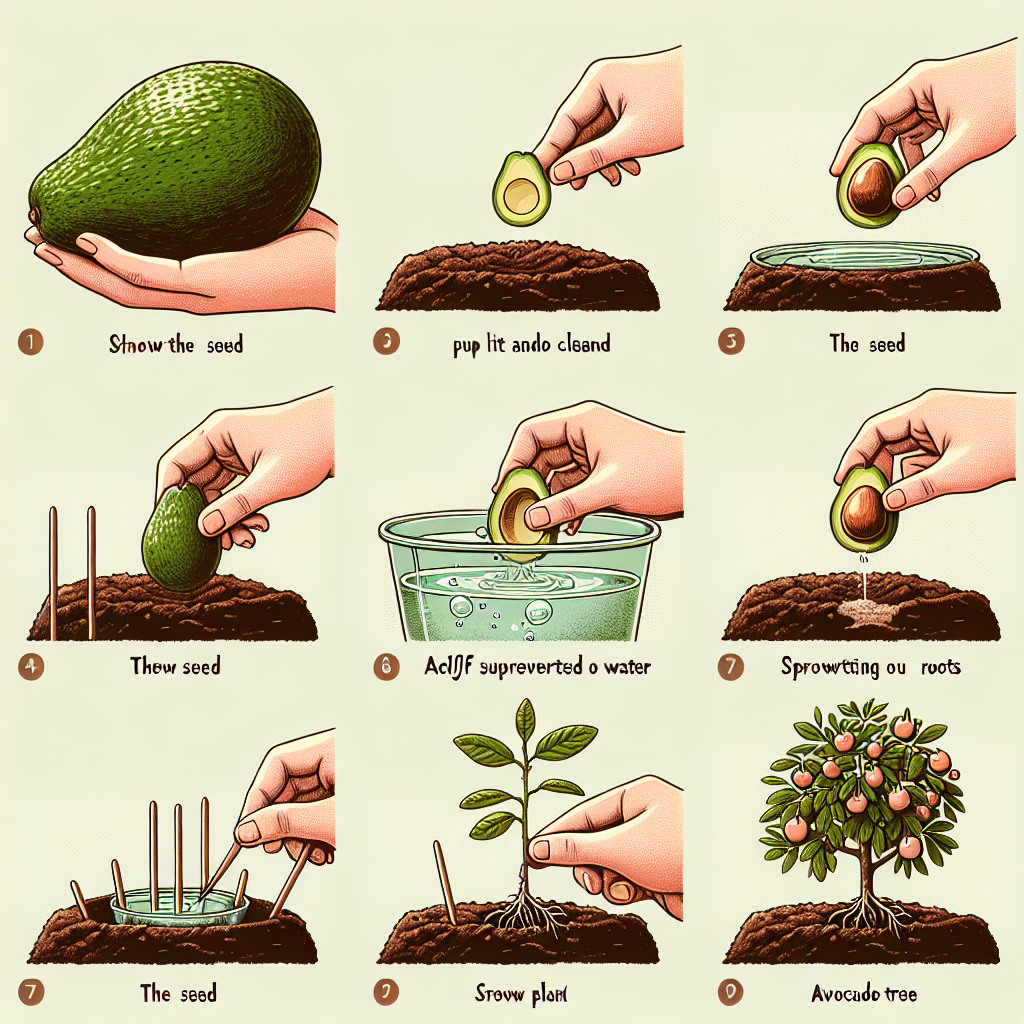
How to grow avocado
How to Grow Avocado: A Comprehensive Guide
Growing avocados can be a rewarding experience, especially if you enjoy the creamy texture and rich flavor of this popular fruit. With their unique taste and numerous health benefits, avocados have gained significant popularity in home gardens and commercial farms alike. This article will explore the essential steps and tips on how to successfully grow avocado trees in your own backyard.
Understanding Avocado Varieties
Before you delve into the world of avocado cultivation, it's essential to understand the different varieties available. Avocado trees are categorized into three main types:
- Mexican Avocado (Persea americana var. drymifolia): Known for their cold hardiness, these avocados thrive in warmer climates.
- Guatemalan Avocado (Persea americana var. guatemalensis): Originating from high altitudes, these trees can handle some frost but prefer tropical environments.
- West Indian Avocado (Persea americana var. Americana): These trees favor warm, humid climates and are not frost-tolerant.
Choosing the right variety depends on your local climate and personal preferences. Popular varieties include Hass, Fuerte, and Bacon, each with its distinct flavor and texture.
Ideal Growing Conditions for Avocados
Avocado trees thrive in specific conditions that promote healthy growth. Understanding these conditions will increase your chances of success. Here’s what to consider:
- Sunlight: Avocados require full sunlight, meaning they should receive at least 6 hours of direct sunlight daily.
- Soil: Well-draining soil is crucial to avoid root rot. A mixture of sandy loam with organic matter works best.
- Water: Regular watering is essential, especially during the first few years. The soil should be moist but never soggy.
- Temperature: Avocados prefer temperatures between 60°F to 85°F (15°C to 29°C) and are sensitive to extreme cold.
Planting Your Avocado Tree
When you're ready to plant, follow these steps for optimal results:
- Select a hardy sapling: Purchase a healthy avocado sapling from a reputable nursery.
- Choose the right site: Find a sunny spot in your garden with well-draining soil.
- Dig a proper hole: Dig a hole that is twice the width of the sapling's root ball but no deeper than the sapling itself.
- Plant the sapling: Place the sapling in the center of the hole, ensuring the top of the root ball is level with the soil surface.
- Backfill the hole: Fill in around the root ball with soil and gently pat down to eliminate air pockets.
- Water thoroughly: After planting, water the tree deeply to help settle the soil.
Caring for Your Avocado Tree
Once your avocado tree is planted, proper care is crucial for its health and productivity. Here are some essential care tips:
Watering
Avocado trees require moderate watering, but the exact amount can vary based on the climate, soil type, and the tree's age. During the first couple of years, ensure the soil remains consistently moist. Here’s a simple watering guide:
- For young trees, water deeply once a week.
- For mature trees, you can reduce watering to every two weeks, depending on rainfall.
Fertilization
Fertilizing your avocado tree helps provide the essential nutrients it needs for growth:
- Choose a balanced fertilizer: A 10-10-10 NPK fertilizer is a good option.
- When to fertilize: Apply fertilizer in early spring and again in late summer.
- Application method: Follow manufacturer instructions for the correct amount based on your tree size.
Pest Management
Like all plants, avocado trees can fall victim to pests and diseases. Familiarize yourself with common pests to manage them effectively:
- Avocado Lace Bug: Small insects that can cause leaf spotting. Consider using insecticidal soap.
- Root Rot: Often caused by overwatering, ensuring proper drainage and avoiding excessive moisture can help.
- Fungal Diseases: Fungal infections can be managed with appropriate fungicides and by maintaining plant hygiene.
Pruning Your Avocado Tree
Pruning is an essential part of maintaining a healthy avocado tree. Here’s how to do it correctly:
- Timing: Prune during the late winter or early spring when the tree is still dormant.
- Remove dead or damaged branches: This encourages new growth and improves air circulation.
- Shaping: Aim for a rounded shape to allow sunlight to penetrate the inner foliage.
Harvesting Avocados
The moment you’ve been waiting for! Harvesting avocados requires some patience. Here’s how you know when your avocados are ready to pick:
- Compression Test: Gently squeeze the fruit; if it yields slightly, it's ready.
- Color Change: Some varieties change color when ripe, such as Hass avocados turning darker.
- Time: Generally, avocados take about 6-18 months to bear fruit after flowering, depending on the variety.
Common Challenges in Growing Avocado
While growing avocado trees can be fulfilling, you may encounter some challenges along the way. Here are some common issues and solutions:
- Leaf Dropping: This can indicate stress from environmental changes or pest issues. Evaluate your care routine for needed adjustments.
- Slow Growth: Ensure your tree has adequate sunlight, water, and nutrients.
- Fruit Drop: High temperatures during pollination can lead to fruit drop; ensure a consistent watering schedule.
Final Thoughts
Growing avocados is not only about enjoying the taste of this nutritious fruit, but it also connects you with nature and the gardening process. By following the above guidelines on how to grow avocado trees, you’ll be on your way to enjoying a bountiful harvest. Remember, patience is key in gardening, and with proper care, your avocado tree can thrive and produce delicious fruit for years to come. Happy gardening!
By Guest, Published on October 6th, 2024